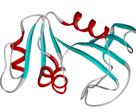
|
Contract no. 123 | PN-II-PT-PCCA-2011-3.1-0595 |
|
BIOPEP |
|
PN-II-PT-PCCA-2011-3.1-0595| Contract no. 123
Description of the Project: Antimicrobial peptides (AMPs) are an integral part of the immune system and protect a host from invading pathogenic bacteria. To overcome the problem of antimicrobial resistance, AMPs are being considered as potential alternatives for antibiotics. Although over 1000 AMPs have been isolated and characterized from various hosts, only limited successes have so far been achieved in clinical trials. The major hurdles for converting them into drugs lie in the high cost of production, toxicity to host cells, and susceptibility to proteolytic degradation. Therefore, a better understanding of the structure–activity relationships of AMPs is required to facilitate the design of novel antimicrobial agents. Herein we plan to focus our effort on designing and optimizing novel short, cationic amphiphilic peptides. We will undertake rational design, synthesis, and extensive testing of a series of short cationic peptides, we envision proteolityc and salt resistant. They will be made of a limited set of L- and D-amino acids based on an elementary amphipathic templates of up to to 11 amino acids, searching for the minimum number of aminoacids and optimal architecture able to confer the peptide optimal lytic activity and specificity against various pathogens. In order to enhance antimicrobial activity with no additional hemolytic activity, peptide synthesis will be considered by using non-natural amino acid analogs, specifically fluorinated amino acids that will substitute hydrophobic residues leucine, isoleucine and phenylalanine. This group of peptides will be designed and synthesized with shorter sequence and simpler molecular structure and could be easily modified upon a particular requirement. In addition, the synthetic nature of these peptides is expected to alleviate the risk of carrying biological pathogens, as it happen to natural antibacterial peptides isolated from organisms. The structural simplicity also offer technological advantages for mass production and purification.
Selected Objectives:
- data regarding the minimal length for de-novo designed and synthesized peptides, which endow them with lytic activity and specificity; - finding minimum structural requirements for synthetic short peptides, with potential to turn them less expensive AMPs; - data regarding the primary sequence order and topology arrangement of aromatic residues for optimal peptide anchoring to the membrane; - pinpointing best candidates from de novo synthesized short peptides, for the generation of a new class of antimicrobial with improved lytic properties and specificity; - elucidation of possible membrane translocation – activity correlation of short, synthetic AMPs – to reveal essential structural determinats of short AMPs, that possibly facilitate membrane translocation through porins while leaving the lipid matrix intact; - the prediction and parametrization of short AMP activity, based on physicochemical properties of particular pathogenic membranes.
|
|
RATIONAL DESIGN AND GENERATION OF SYNTHETIC, SHORT ANTIMICROBIAL PEPTIDES. LINKING STRUCTURE TO FUNCTION. (BIOPEP) |

|
This project is funded under the National CDI Plan 2007 - 2013 UEFISCDI and is part of the category: Applied Research Collaborative Projects. |
